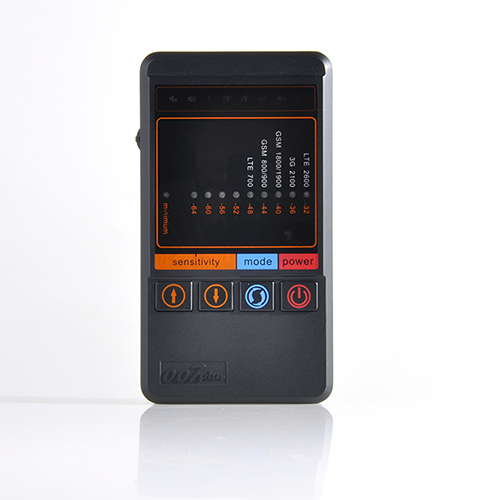What do Finnish civil pilots who lose flight signals, ships in the Black Sea displaying their location 40 miles away on land, and US drivers who avoid tolls have in common? In every situation it is a question of jammers that affect the Global Positioning System (GPS).
What is the global positioning system?
The Global Positioning System is a network of satellites that transmit signals. Receiving devices use these signals to determine a geographic location through trilateration.
For example, to determine a position on the ground, at least three incoming signals are required. However, as the number of incoming signals increases, the accuracy improves. In order to determine both a geographic location and an altitude, at least four signals must be present.
GPS not only determines geographic locations, it also provides a critical fourth dimension that many are unfamiliar with - time. Each GPS satellite contains several atomic clocks that send extremely accurate time data to the receivers. The receivers decode this information and allow an electronic device to determine the correct time within 100 billionths of a second.
Why is GPS important?
Countless infrastructures, companies and electronic products are based on the time and location synchronization of a GPS. They include:
Communications industry
Energy and utility companies
Emergency services (police, fire brigade and medicine)
Financial markets
Transport (air, sea, rail and road)
Medical equipment
ATMs
Gas stations
Smart home devices
In addition, many other devices rely on GPS to some extent. The number and types of elements that contain GPS increase as technology advances.
Outside the US, other countries rely primarily on China's BeiDou, Russia's Glonass, and Europe's Galileo programs. All of these systems, along with the US GPS system, are part of the Global Navigation Satellite System (GNSS).
Russian use of jammers interferes with GNSS
In recent years, the Russians have started blocking the GNSS. Initially, Russia only temporarily blocked or faked the GNSS to cover up President Putin's location. These tactics were intended to ensure Putin's safety and prevent weapons relying on satellite locations from tracking him.
For example, an incident with the ships in the Black Sea occurred when Putin was crossing the Kerch Bridge from Russia to Crimea. This resulted in 24 ships anchoring nearby showing their location at Anapa Airport, over 40 miles away.
Putin's palatial summer home near the Black Sea is also protected by a permanent GNSS spoofing zone. That gives his house the same level of airspace protection and GNS interference as the Kremlin.
However, Russia has expanded its GNSS jamming, blocking and spoofing in recent years. Your GPS jammers are so advanced that they can probably carry out widespread “attacks” on GNSS receivers, potentially disrupting all navigation systems in a selected area.

American use of GPS jammer also a problem
There is also a GPS jammer threat within our own nation. While the Federal Communications Commission (FCC) made GPS jammers illegal in the United States, they still exist.
In 2015, pilots who flew to Northeast Philadelphia Airport reported that they had lost their GPS navigation signals as they approached the runway. The incident was caused by a truck driver who was parked in a nearby parking lot and disabled a tracking device using a GPS jammer he had bought.
LORAN, America's early GPS
During World War II, the United States developed the Long Range Navigational System (LORAN) for convoys of ships crossing the Atlantic and for long-range patrol aircraft. In 1958 the US Coast Guard took control of LORAN.
Due to the accuracy of GPS, the Obama administration decided in 2009 that LORAN "no longer fulfills a government function and is not suitable as a backup for GPS". The government declared the system obsolete and both the US and Canada turned off their LORAN beacons.
By 2015, other countries around the world had also turned off their beacons. An improved trial version of LORAN, known as eLoran and exactly within 65 feet, has also stopped.
The National Timing Resilience and Security Act of 2018 creates a backup system for GPS
Reliance on GPS for location and time is so critical that U.S. Senators Cruz (R-Texas) and Markey (D-Mass), as well as Congressmeneten Garamendi (D-CA) and Hunter (R-CA) worked together to pass the National Timing Resilience and Security Act of 2018, which President Trump signed last December.
This law requires the creation of a backup system for GPS by the end of 2020. The requirements include that the backup system should have the following characteristics:
Wireless
Terrestrial
The ability to provide extensive coverage
Synchronized with the coordinated universal time
elasticity
Extremely difficult to break down
Can be deployed at remote locations
In addition, the backup system must work with and complement other similar positioning, navigation, and timing systems, including improved remote navigation systems and nationwide differential GPS systems. It should also be able to adapt and expand to provide position and navigation capabilities.
In addition, the law established the use of applicable private sector expertise to develop, build and operate the system. It must be fully functional for at least 20 years.
In a 2018 press release, Senator Cruz (R-Texas) said, “If the current system were disrupted for just a few hours, the American people, economy and way of life would be immediately threatened. "Senator Marley (D-Mass) added," The country's banking, communications, power, and transportation sectors rely on accurate timing from GPS. We cannot allow this vital system to be compromised by natural phenomena like solar flares or coordinated attacks like jamming. "
Further advances are needed in the GPS backup system
In early March, Congressman DeFazio (D-Oregon), chairman of the House Transportation and Infrastructure Committee, said, “We are concerned that 14 months after the mandate ... became law and 11 months after With substantial funding from Congress, the administration has made little observable progress. "
In a non-partisan letter, Congressmen Larson (D-Washington) and chairman of the Aviation Subcommittee, Maloney (R-New York), chairman of the Coast Guard and Maritime Transportation Subcommittee, and Garamendi (D-California), chairman of the Armed Forces Subcommittee on Readiness asked Transport Minister Chao for a status update. No update will be publicly available from the beginning of May.
As the US increasingly relies on technology to control many aspects of our lives, the fact that this technology requires extremely precise timing is not lost. As pointed out by the US Alliance for Telecommunications Industry Solutions, GPS jammers that cause timing issues are a point of failure for the wireless system and in our growing Internet of Things.

